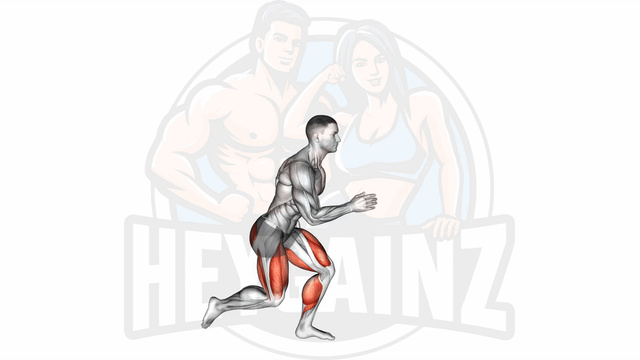
Instructions:
- 1Stand on one leg with your foot pointed forward
- 2Lower your body into a shallow squat
- 3Explode upwards into a high vertical jump
- 4Land softly and immediately transition into the next jump
Tips:
- Engage your core for stability during the jump
- Focus on height more than speed
- Ensure your knee is aligned with your foot during the squat
- Remember to stretch and warm-up properly before starting the exercise
Enhancing Performance with the Single Leg Vertical Jump
The single leg vertical jump is a dynamic plyometric exercise designed to improve lower body strength, power, and athletic performance. This exercise primarily utilizes body weight, making it accessible for individuals at various fitness levels who are looking to enhance their jumping ability and overall athleticism.
The single leg vertical jump can also serve as an effective assessment tool, commonly referred to as the single leg vertical jump test. This test not only measures vertical leap ability but also provides insight into an individual's strength and balance on each leg. It is particularly beneficial for athletes involved in sports requiring explosive movements, as it can help identify any imbalances or deficits between legs.
When performing the single leg vertical jump, it's important to maintain proper form to maximize benefits and minimize the risk of injury. Here are some tips to help you excel:
- Warm-Up: Engage in a thorough warm-up routine to prepare your muscles and joints for explosive movements.
- Focus on Technique: Keep your knee aligned with your foot as you prepare to jump. Avoid letting it cave inward.
- Use Your Arms: Swing your arms upwards during the jump to generate additional lift and momentum.
- Land Softly: Aim to land quietly and with control to reduce impact on your knees and joints.
Normative data for the single leg vertical jump varies by age and gender, so individuals should refer to standard benchmarks to evaluate their performance. For instance, understanding the average jump height can provide a valuable reference point for personal improvement. Additionally, the single leg vertical jump has been linked to assessing knee stability and can help identify deficits, which is crucial for those recovering from injuries, especially related to the ACL.
For those looking to diversify their training routine, consider incorporating variations such as the single leg broad jump, which focuses on horizontal power and can complement your vertical jumping exercises.
By integrating the single leg vertical jump into your workout regimen, you can work towards enhanced strength, balance, and overall athletic performance. Embrace this exercise and watch your capabilities soar!